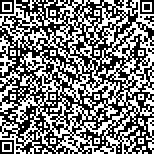蔡倩,徐亮,孙武东,等.重复外周磁刺激联合重复经颅磁刺激对脑卒中后上肢功能障碍的影响[J].中华物理医学与康复杂志,2024,46(5):412-416
扫码阅读全文

|
| 重复外周磁刺激联合重复经颅磁刺激对脑卒中后上肢功能障碍的影响 |
|
| |
| DOI:10.3760/cma.j.issn.0254-1424.2024.05.005 |
| 中文关键词: 重复经颅磁刺激 重复外周磁刺激 脑卒中 上肢功能 |
| 英文关键词: Transcranial magnetic stimulation Peripheral magnetic stimulation Magnetic stimulation Stroke Upper limb function |
| 基金项目:东南大学附属中大医院全科住院医师规范化培训重点专业基地开放课题(ZDZYJD-QK-2022-15);南京市体育局体育科研局管课题资助项目(NJTY2023-102) |
|
| 摘要点击次数: 3537 |
| 全文下载次数: 4141 |
| 中文摘要: |
| 目的 观察重复外周磁刺激(rPMS)联合重复经颅磁刺激(rTMS)对脑卒中后上肢功能障碍的影响。 方法 选取符合入选和排除标准脑卒中患者128例,按随机数字表法分对照组、中枢组、外周组和联合组,每组32例。4组患者均进行常规药物治疗和康复训练,联合组增加非受累侧M1区低频rTMS和患侧上肢Erb点的rPMS治疗,中枢组增加低频rTMS和安慰性rPMS,外周组增加rPMS治疗和安慰性rTMS,对照组给予安慰性rTMS和安慰性rPMS。rPMS和低频rTMS治疗均为每日1次,每次15 min,每周治疗6 d,连续治疗4周。治疗前和治疗4周后(治疗后),采用Fugl-Meyer评定量表上肢部分(FMA-UE)和Wolf运动功能测试(WMFT)评定4组患者患侧上肢运动功能,同时采用改良Barthel指数(MBI)评定其日常生活活动能力。 结果 治疗后,4组患者的FMA-UE、WMFT及MBI评分较组内治疗前均明显改善,差异均有统计学意义(P<0.05)。联合组、中枢和外周组患者治疗后的FMA-UE评分[分别为(37.10±1.99)分、(28.10±3.15)分、(28.21±2.96)分]、WMFT评分[分别为(34.90±2.81)分、(26.87±2.79)分、(26.72±2.63)分]和MBI评分[分别为(69.55±3.67)分、(59.07±3.45)分、(58.90±3.79)分]均优于对照组治疗后(P<0.05),且联合组的FMA-UE、WMFT及MBI评分均显著优于中枢组和外周组治疗后,差异均具有统计学意义(P<0.05)。 结论 rTMS和rPMS均可改善脑卒中后上肢功能障碍患者患侧上肢的运动功能和日常生活活动能力,且两种刺激方式联合使用的疗效可能更佳。 |
| 英文摘要: |
| Objective To observe any effect of combining repetitive peripheral magnetic stimulation (rPMS) with repeated transcranial magnetic stimulation (rTMS) on upper limb dysfunction after a stroke. Methods A total of 128 stroke survivors were randomly divided into a control group, a central group, a peripheral group and a combined group, each of 32. In addition to conventional medical treatment and rehabilitation training, the combined group were given 1Hz rTMS over the M1 area of the unaffected hemisphere and rPMS on the Erb point of the affected upper limb. The central group were given rTMS with sham rPMS, the peripheral group was given rPMS and sham rTMS, while the control group received sham rTMS and sham rPMS. Both the rPMS and rTMS, genuine and sham, were administered once daily for 15 minutes each time, 6 days a week for 4 consecutive weeks. Before and after the treatment, the Fugl-Meyer upper extremity assessment (FMA-UE) and the Wolf motor function test (WMFT) were administered to evaluate the upper limb motor function of the subjects′ affected side. The Modified Barthel index (MBI) quantified their ability in the activities of daily life. Results After the intervention, the average FMA-UE, WMFT and MBI scores had improved significantly in all four groups. After the intervention the average FMA-UE, WMFT and MBI scores of the combined, central and peripheral groups were all significantly better than the control group′s averages, with those of the combined group significantly superior to the central and peripheral groups. Conclusion Both rTMS and rPMS can promote the recovery of upper limb motor function after a stroke and ability in daily life activities. Their combination can achieve better effects. |
|
查看全文
查看/发表评论 下载PDF阅读器 |
| 关闭 |
|
|
|